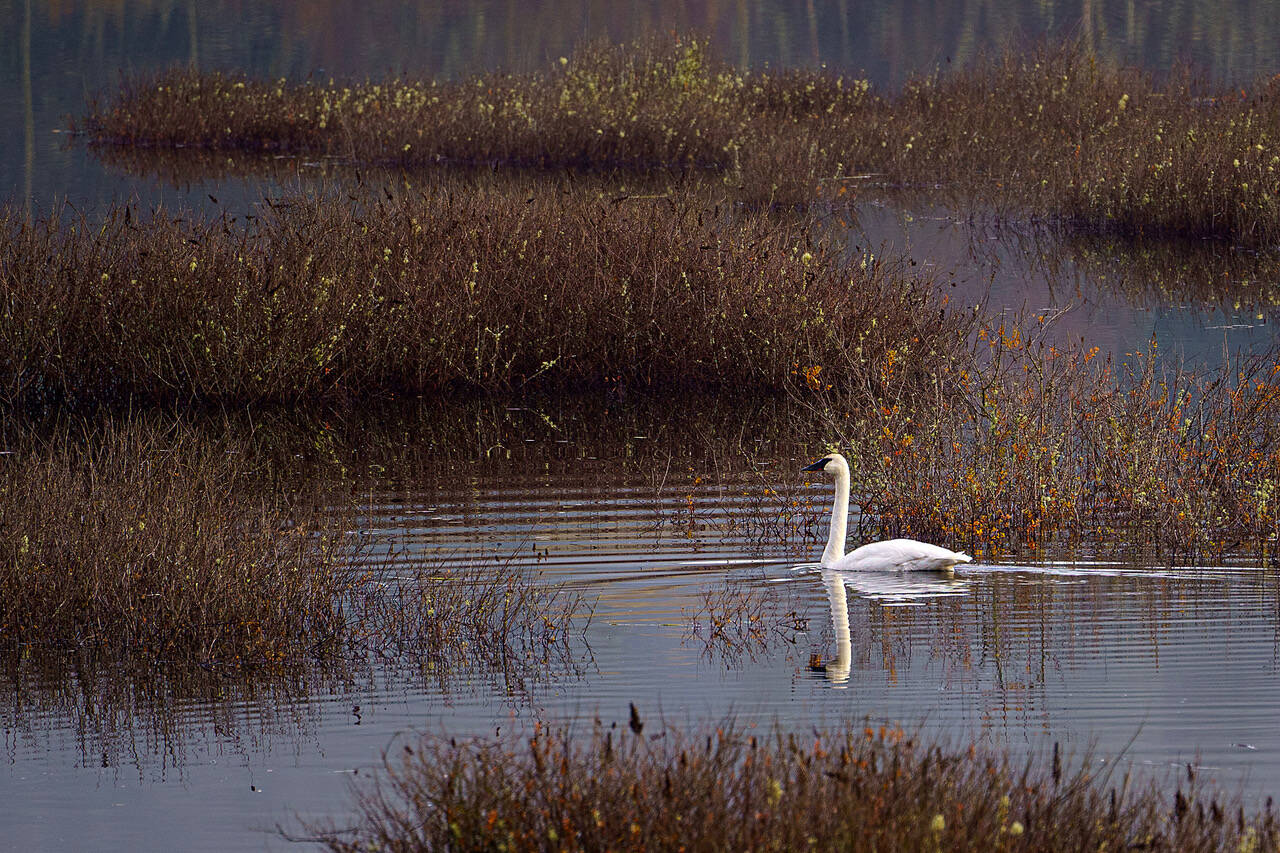A special bird has once again found its way to the South Whidbey wetlands.
Many passersby have likely missed the lone trumpeter swan dwelling in the Cultus Bay wetlands this month, an anticipated return of a bird species that also made the wetlands its home in years past.
While large groups of the swans famously congregate in Skagit and Whatcom counties, as well as Dugualla Bay on North Whidbey, during this time of the year, they are a rarity on South Whidbey.
In 2019, a male trumpeter swan swam about the wetlands, feeding on vegetation. It was very exciting to David Welton, South Whidbey Record’s photographer, who has spent hours quietly capturing images of the lonely waterfowl and researching their history.
In the 20th Century, trumpeter populations dwindled in the United States to fewer than 100. Due to restoration efforts, it is estimated their numbers could be near 100,000 across the country today.
Hunters killed the swans, which are the heaviest and longest native birds in North America, for skins and feathers for hats, boas, powder puffs, wig foundations and quills, Welton said. The birds also faced predation, power lines and lead poisoning from fishing sinkers.
Single swans are unusual, he said, though birders can only speculate as to how lone swans continue to dwell in Whidbey’s wetlands. Perhaps it fledged right before migration and became tired or injured along the way.
Another swan landed in the wetlands in 2022, a female this time, he said. She didn’t hang around for long, and just a couple months after she left, the male died.
His body was recovered and sent to the state, and an autopsy reported he likely died of bird flu.
Welton and his wife named this swan Zeus after the famous story of Zeus turning into a swan to mate with Leda, the Queen of Sparta who gave birth to Hercules. Leda is also the name of Welton’s dog.
Since Zeus passed away, every chance Welton has, he cruises by the wetlands and looks for swans.
Welton was quick to draw his camera when the southern migration brought another member of the world’s largest waterfowl species to the wetlands this month. It’s still early in the migratory season, he said, so there is a chance he will be joined by another of his kind.
“It would be just incredibly cool to see a bunch of goslings swimming around and right beside the road,” he said.
The Whidbey Camano Land Trust took control of the Glendale Wetland Preserve, 51 acres of some of the most productive and beneficial ecosystems on the planet, in 2020. The preserve holds open water, forests, wetlands, meadows and a creek, providing habitat to many species in need.
“I think it’s really exciting,” Welton said. “(The swan) shows that the wetlands are healthy. It’s an indicator. It’s kind of like the opposite of a canary in the coal mine. I think it just says something neat about the island.”


